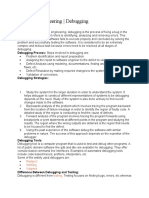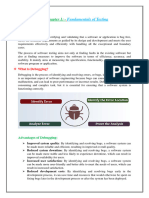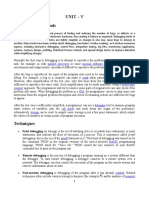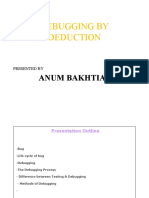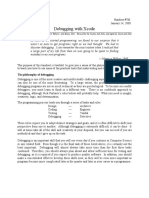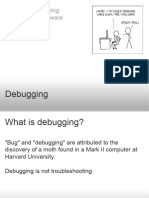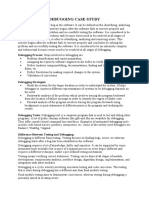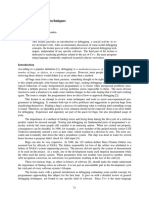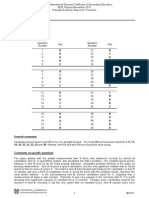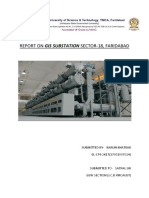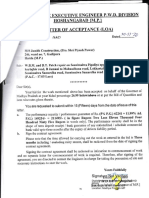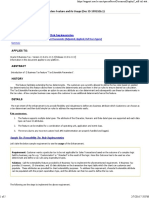0% found this document useful (0 votes)
67 views15 pagesDebugging
This document discusses software debugging. It defines debugging as the process of connecting a symptom to a cause to correct errors. Debugging occurs after successful testing uncovers an error. The debugging process involves reproducing test cases, identifying suspected and actual causes, making corrections, and performing regression tests. Debugging requires techniques like backtracking from symptoms, eliminating potential causes through testing, and getting help from others. The document provides tips on debugging strategies and hints.
Uploaded by
Syma AminCopyright
© Attribution Non-Commercial (BY-NC)
We take content rights seriously. If you suspect this is your content, claim it here.
Available Formats
Download as PPT, PDF, TXT or read online on Scribd
0% found this document useful (0 votes)
67 views15 pagesDebugging
This document discusses software debugging. It defines debugging as the process of connecting a symptom to a cause to correct errors. Debugging occurs after successful testing uncovers an error. The debugging process involves reproducing test cases, identifying suspected and actual causes, making corrections, and performing regression tests. Debugging requires techniques like backtracking from symptoms, eliminating potential causes through testing, and getting help from others. The document provides tips on debugging strategies and hints.
Uploaded by
Syma AminCopyright
© Attribution Non-Commercial (BY-NC)
We take content rights seriously. If you suspect this is your content, claim it here.
Available Formats
Download as PPT, PDF, TXT or read online on Scribd
/ 15








